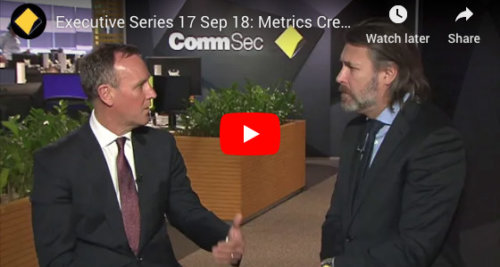Looking beyond traditional assets for sources of income

With risks increasing in equities markets and a low yield environment for bonds and cash, investors are looking elsewhere for sources of income. Andrew Lockhart* discusses the merits of the corporate loan market for income-seeking investors.
Searching for sources of income in a record low interest rate environment has become an even greater challenge for investors.
Investors who rely on earning interest from their savings were the biggest losers when the Reserve Bank of Australia (RBA) cut rates to a record low in July, prompting banks to slash interest from cash accounts, term deposits and savings accounts.
In addition, equity markets are arguably looking well-priced and increasingly risky as the 10-year bull run marches onwards against a backdrop of sliding economic growth. This is leading many to take an increasingly cautious outlook on equities as an ongoing source of income.
To top it off, in bond markets investors are paying higher prices for declining yields, with Australian government bonds generating less than 2% and corporate bond yields continuing to fall. Overseas, negative rates mean some investors are paying to own bonds.
Alternative sources of income
Finding income investment opportunities which offer diversification from traditional asset classes like equities and bonds can be difficult, which explains the growing interest in alternative assets like corporate loans.
Corporate loans are loans made to businesses of scale (ie not SMEs) for a specific purpose, such as working capital, real estate, capital expenditure and acquisitions and returns are generated from the interest they pay.
This subset of fixed income is classified as a defensive investment as it is structured with various embedded protections, providing predictable yields and low volatility. With the exception of some highly rated corporate borrowers, loans are also secured by a borrower’s assets, offering a greater degree of investor protection when compared to equities, with lenders being paid before equity holders in the unlikely event of business insolvency.
In terms of their returns, corporate loans have a low correlation to other major asset classes including equities, government bonds, hybrids and term deposits, providing an excellent source of portfolio diversification for investors.
The use of floating rates provides protection against inflation while listed funds give investors the added benefit of liquidity.
The corporate loan market in Australia is both large and diverse. According to the Australian Bureau of Statistics1, the corporate loan market is approximately $963 billion – over 20 times the size of the $43 billion domestic corporate bond market – providing significant opportunities for investors of all types.
Accessing the corporate loan market
Until recently, a key issue for many investors has been accessing the corporate loan market, which has traditionally been dominated by the big four banks.
To address this issue, Metrics Credit Partners was the first corporate loan lender in Australia to list an investment trust (LIT) on the ASX in 2017, providing investors with access to a diversified portfolio of corporate loans, via the MCP Master Income Trust (ASX: MXT). The fund includes over 100 corporate loans across industries and spanning the credit spectrum.
While the corporate loan loss rates in Australia is low averaging 0.32%1 over the past 10 years, investing in a diversified portfolio helps to further limit downside risks and a broad portfolio of loans allows investors to participate in a range of sectors but without the risks associated with equities.
For example, loan assets in MXT provide exposure across a range of industry segments including; energy, industrials, consumer staples, healthcare, IT, utilities, infrastructure and commercial real estate.
For investors considering a capital allocation to the corporate loan market, it is important to know and understand the potential pitfalls. Managers with smaller portfolios or weaker networks may not be able to generate a pipeline of sufficient high-quality transactions. Additionally, inexperienced managers may also fail to appropriately mitigate key risks which or may inappropriately price an individual transaction.
Overall however, we believe that with the right management team in place, the corporate loan market will continue to present opportunities for investors seeking sources of regular income in a low interest world.
About Metrics Credit Partners
Metrics Credit Partners is Australia’s leading non-bank corporate lender and alternative asset manager specialising in fixed income, private credit, debt, equity and capital markets. Metrics offers a range of listed and unlisted products providing individual and institutional investors with unrivalled access to the highly attractive Australian private debt market.
Disclaimer
The information provided in this communication is of a general nature only, is not intended for retail investors, does not constitute financial product advice and has been prepared without taking into account your objectives, financial situation or needs. Before making an investment decision in respect of any of the funds managed by Metrics Credit Partners Pty Ltd (Metrics) ABN 27 150 646 996 AFSL 416 146 (each a Fund), you should consider the current offering document of the relevant Fund and assess whether that Fund is appropriate given your objectives, financial situation or needs. If you require advice that takes into account your personal circumstances, you should consult a licensed or authorised financial adviser.
Neither the responsible entity or the trustee of a Fund nor Metrics guarantees repayment of capital or any particular rate of return from that Fund. Neither the responsible entity or trustee of a Fund nor Metrics gives any representation or warranty as to the reliability, completeness or accuracy of the information contained in this communication. To the maximum extent permitted by law, Metrics disclaims all and any responsibility or liability for any loss or damage which may be suffered by any person relying upon any information contained in or omission from this communication. Past performance is not a reliable indicator of future performance.
August 2019
Other News
Podcast: The Rules of Investing | From Cold Call to Capital Giant
In this episode of The Rules of Investing, Metrics Group CEO & Managing Partner, Andrew Lockhart discusses the conditions that…
Metrics Credit Partners Completes Acquisition of Taurus and BC Invest
Metrics Credit Partners (“Metrics”), a leading Australian based alternative asset management firm, has today successfully completed the acquisition of Taurus…
INSIGHTS
MCP Income Opportunities Trust (MOT) lists on ASX
Sydney, 29 April 2019: The Trust Company (RE Services) Limited (ABN 45 003 278 831) (Responsible Entity) is the responsible…
MCP Master Income Trust wins Lonsec Listed Fund Award
The award came a year after MXT was listed on the Australian Securities Exchange






